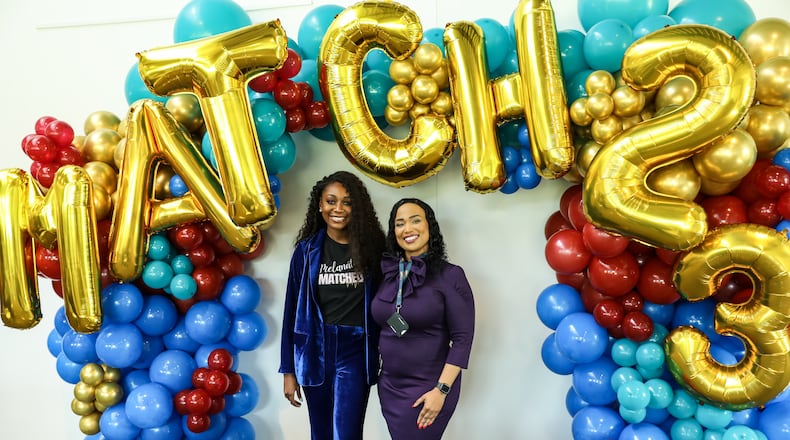In Georgia, the growth in osteopathic medicine graduates has meant more rural Georgia communities are getting badly needed primary care doctors.
Osteopathic medicine was once considered a non-traditional program for aspiring doctors. Doctors of osteopathic medicine, or DOs, focus on preventative care and treating the whole patient — including considerations of lifestyle and environment — rather than focusing on treating symptoms.
According to the Federation of State Medical Boards, 90% of physicians in the United States have a doctor of medicine degree (MD), compared to 10% with DOs. Georgia’s physician makeup consists of 92% MDs (38,109) and 8% (3,284) DOs, but a school is working to close this gap.
The only osteopathic medical school in Georgia is the Philadelphia College of Osteopathic Medicine, which educates DOs at its two Georgia campuses — one in Suwanee and the other in Moultrie. The school of 534 students is now the third largest medical school in Georgia and some of their graduates are helping solve a shortage of doctors in rural counties.
Both medical doctors and doctors of osteopathic medicine are physicians that undergo four years of medical school, board examinations and they even go into the same residency training programs. The differences between the two degrees are mostly rooted in how they approach patient treatments.
Medical doctors or MDs, practice “allopathic” medicine, which means they focus more on the diagnosis and treatment of diseases, and often rely on prescription drugs to solve illnesses. A DO takes a wholistic, preventative approach by examining the condition of a patient’s mind, body and spirit, and may look for alternatives to drugs. Another major difference between DOs and MDs is that DOs tend practice in primary care settings, while MDs may more often specialize in particular areas of medicine.
One thing that particularly sets DOs apart is their training to physically manipulate the body in order to relieve ailments, which is referred to as osteopathic manipulative medicine or treatment.
“Our students tend to pick up an extra skill set as it relates to osteopathic manipulative medicine. That’s a way of being able to utilize their hands to get to some of the roots causes of disorders or diseases without the use of medication,” according to Dr. Robert Walker, a professor and assistant dean at the Philadelphia College of Osteopathic Medicine’s South Georgia campus in Moultrie. “This gives us a more holistic approach to medicine. As, we’ve seen with COVID, a lot of people are pushing towards the more holistic opportunities that the DO provides.”
Janai Groves, a current student at Philadelphia College of Medicine who is set to graduate in 2026, hopes that the school’s presence in Georgia will expand people’s ideas about traditional medicine.
“I feel like there shouldn’t be such a discrepancy in between the thought process behind having a MD versus a DO, especially since we’re learning the same curriculum and treating the same patients,“ she said.
Credit: Philadelphia College of Osteopathic Medicine
Credit: Philadelphia College of Osteopathic Medicine
Groves, a native of Albany, Ga. became a certified medical assistant and worked three years before training to become an DO. She said that taking a non-traditional approach to her medical education has taught her bedside manner and the importance of trust between patients and providers.
“A lot of people that I know are distrusting of physicians in general and are leaning more towards alternative resources instead of actual medication,” said Groves. “I want to be a resource for those people.”
Over the past five years the number of osteopathic physicians in the U.S. has increased by more than 30%, according to the American Osteopathic Association. Walker said he believes that this trend will only continue.
“It’s now to the magnitude where we are multiplying DO schools ... so that people are able to have this choice, MD or DO,” he said. “On the flip side, you do have MDs actually going back and getting continuing education to learn osteopathic medicine because they see the advantages of being able to use that along with pharmacological methods.”
Credit: Philadelphia College of Osteopathic Medicine
Credit: Philadelphia College of Osteopathic Medicine
In rural areas across the country, osteopaths are primary care doctors in communities that would otherwise lack them. Dr. Theresa Jacobs, clinical director of the Georgia Primary Care Association, said while overseeing education and training for physicians in the association’s network, she has worked with a number of Philadelphia College’s osteopathic students.
“Their med students and residents rotate through our community health centers,” Jacobs said. “Many of them will stay in that community and work after they’ve completed graduation. So they’re in communities that desperately need primary care providers.”
Data from the Georgia Board of Health Care Workforce shows that in 2020 there were 18 counties in the state without a family medicine physician and nine counties with no physicians at all — all rural counties. Making the need for care even more urgent, rural Georgians experience a disproportionate amount of disparate health outcomes, including higher rates of chronic conditions, higher number of deaths from heart disease, stroke and cancer and worse maternal and child health outcomes.
For Xavia Taylor, the reality of rural health disparities hits close to home and has influenced her path to becoming a practicing physician.
Taylor, a internal medicine resident physician at Archbold Memorial Hospital in Thomasville, grew up in Colquitt County, where Archbold is located, north of Valdosta. To her, a career in osteopathic medicine means being able to serve the community she was raised in.
“I never thought that I’d be given the opportunity. I knew I wanted to go to medical school, but I was always under the impression that I would have to go away for at least that part of it,” Taylor said. " I have always wanted to practice and giving back to my community is very important to me.”
A recent graduate of the Philadelphia College of Osteopathic Medicine’s South Georgia campus, Taylor said the need for medical professionals in rural areas is particularly bad and she hopes to be part of the solution here.
Walker also explained how Philadelphia College is helping to recruit diverse talent to the medical field. By doing so, they are able target underserved and underrepresented communities and take actions to ensure equitable practices in medicine and health care.
For decades, DOs and MDs have practiced alongside each other. While she is a medical doctor, Jacobs understands the value that doctors of osteopathic medicine bring to health care.
“Allopathic and osteopathic medicine are working hand in hand to help overcome the barriers and obstacles that are keeping us to have those low number of providers in rural Georgia,” explained Jacobs.
“Working together and listening to each other to find out what works and doesn’t work, I think, is a good way for us to practice. Being respectful of each of the disciplines. We can learn from each other.”
The Atlanta Journal-Constitution and Report for America are partnering to add more journalists to cover topics important to our community. Please help us fund this important work at ajc.com/give
About the Author
Keep Reading
The Latest
Featured




